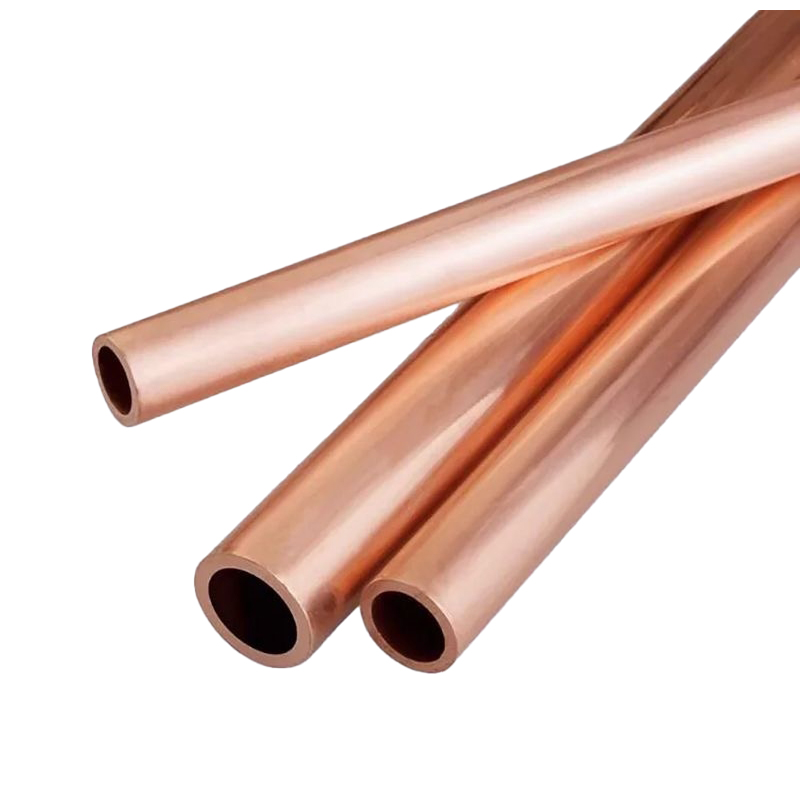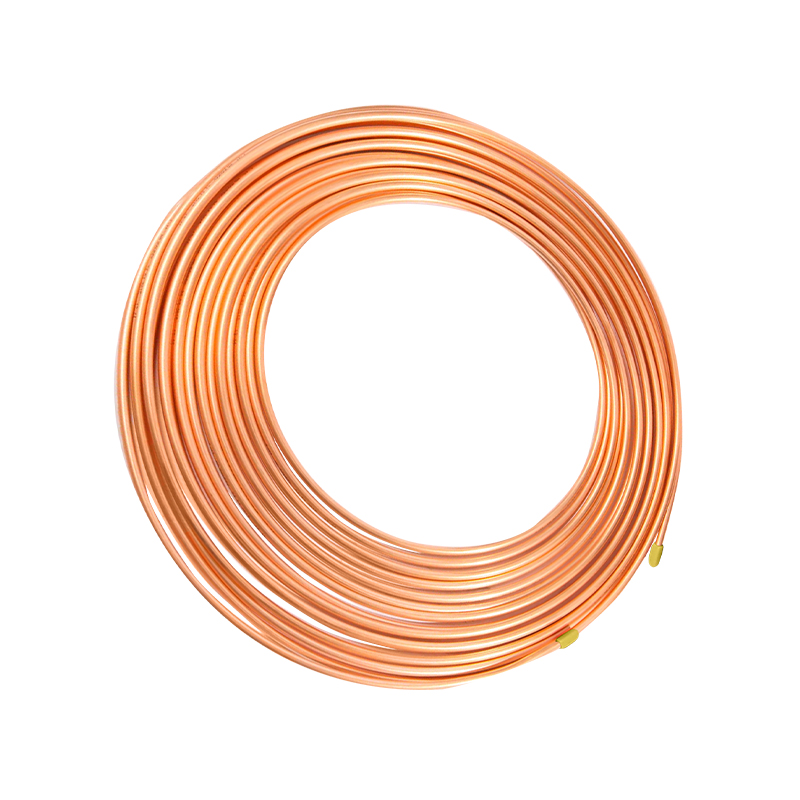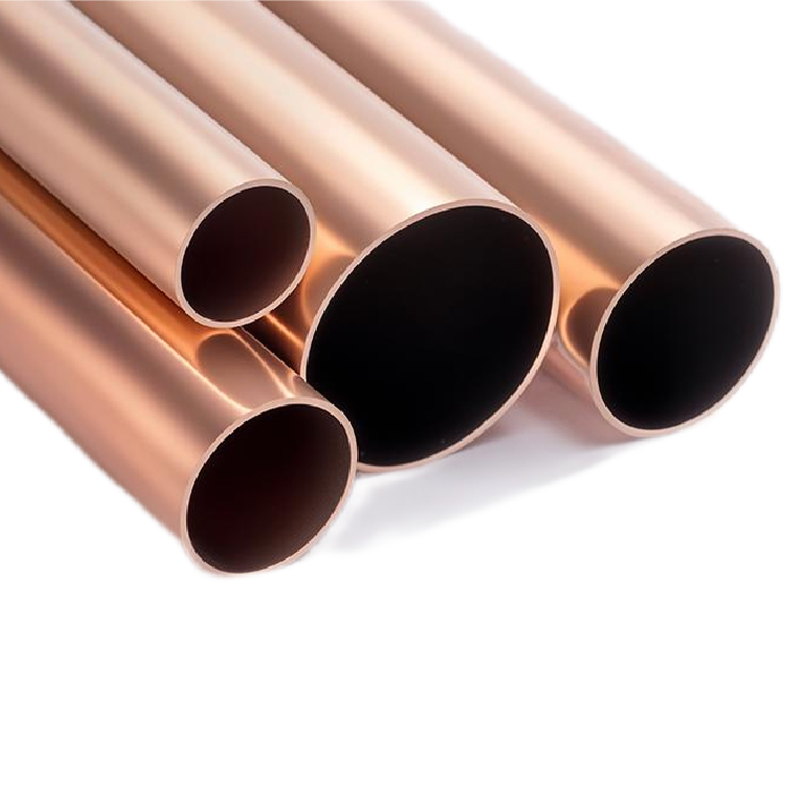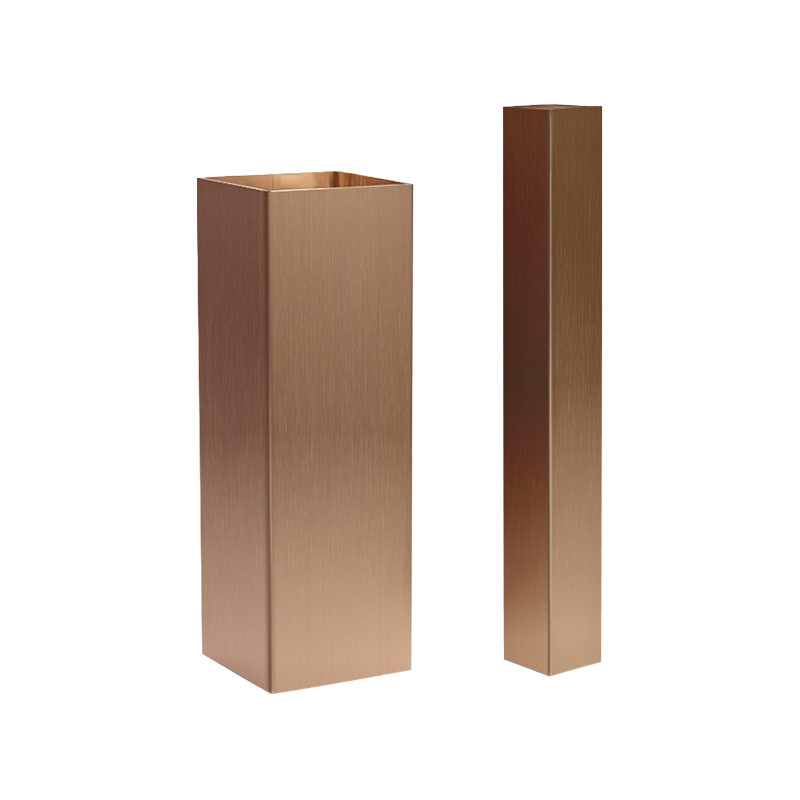
How Copper Evaporator Tube Manufacturers Are Driving the Energy Efficiency Revolution
With increasing global demands for energy efficiency and environmental protection, the refrigeration industry is facing challenges. Especially in sectors such as air conditioning, refrigeration equipment, and automotive cooling systems, effectively reducing energy consumption and improving energy efficiency have become common goals for businesses and governments. As a key component in refrigeration systems, copper evaporator tubes play a crucial role in improving energy efficiency. Copper evaporator tubes not only conduct heat, but innovations in their design, material selection, and manufacturing processes directly determine the energy efficiency of refrigeration systems. Against this backdrop, copper evaporator tube manufacturers are implementing a series of innovative initiatives to drive the entire industry towards greater efficiency, greenness, and energy conservation.
How Copper Evaporator Tube Manufacturers Are Driving the Energy Efficiency Revolution
As an essential core component in refrigeration systems, copper evaporator tubes function by exchanging heat with the refrigerant, rapidly removing heat from the system and ensuring efficient operation. Copper's high thermal conductivity makes it a commonly used material in the refrigeration industry. The design and manufacturing process of copper evaporator tubes not only impact the energy efficiency of refrigeration equipment but also its operating costs and environmental impact. Therefore, copper evaporator tube manufacturers' efforts to improve energy efficiency are particularly critical.
Improving Copper Purity and Optimizing Production Processes
The performance of copper evaporator tubes, especially heat exchange efficiency, is directly related to the purity of the copper and the production process. Copper's thermal conductivity is directly proportional to its purity; the fewer impurities, the better the thermal conductivity. Copper evaporator tube manufacturers continuously improve copper purity through refining techniques, thereby enhancing its thermal conductivity and ensuring more efficient heat transfer. At the same time, advanced production processes are also key to improving energy efficiency.
Currently, many manufacturers use high-precision extrusion and cold forming processes to minimize surface defects and roughness on copper tubes. These processes not only create a smoother surface, reducing frictional losses, but also ensure even heat transfer across the tube surface, improving heat exchange efficiency and further enhancing the system's energy efficiency.
Innovations in Tube Design and Surface Treatment
In addition to the inherent thermal conductivity of copper, the design and surface treatment of copper evaporator tubes are also key factors in improving energy efficiency. Traditional copper evaporator tubes feature a smooth surface, but modern manufacturers are increasing the surface area of the tubes to enhance heat transfer. For example, ribbed and spiral tube designs effectively increase the contact surface area of the tubes, thereby improving heat transfer efficiency. These innovative designs enable refrigeration systems to achieve more efficient heat exchange and reduce energy consumption.
Advances in surface treatment technology have also played a significant role in improving the performance of copper evaporator tubes. By employing micron-level surface finishing, copper evaporator tubes can reduce frictional losses during heat exchange and increase heat transfer speed. Furthermore, the application of surface coating technology enhances the corrosion resistance of copper tubes, extending their service life and preventing the accumulation of refrigerant deposits within the tubes. This not only maintains heat exchange efficiency but also reduces maintenance costs.
Adapting to the Demands of New Refrigerants
With increasingly stringent environmental regulations, traditional refrigerants are gradually being replaced by low-GWP (Global Warming Potential) and chlorine-free refrigerants. The design and manufacturing of copper evaporator tubes must also adapt to these new refrigerants to ensure that the system remains environmentally friendly while maintaining high efficiency.
For example, refrigeration systems using low-temperature refrigerants typically require more sophisticated copper tube designs. This is because the thermal conductivity characteristics of low-temperature refrigerants differ from those of traditional refrigerants, and copper evaporator tubes must be optimized to account for these characteristics. The copper tube's wall thickness, inner diameter, and surface treatment must be tailored to the refrigerant's varying properties to maximize heat exchange efficiency.
By continuously optimizing the matching of copper evaporator tubes with refrigerants, copper evaporator tube manufacturers not only improve the overall energy efficiency of refrigeration systems but also ensure a longer lifecycle and lower maintenance costs during operation.
Intelligent Production and Automated Testing
With the continuous advancement of industrial automation technology, copper evaporator tube manufacturers are gradually integrating intelligent production and automated testing technologies into their production processes. These technologies not only improve production efficiency but also ensure enhanced product quality and energy efficiency.
Automated production lines precisely control every process step, ensuring copper tube production accuracy and preventing performance loss due to improper processing. Furthermore, intelligent inspection systems monitor key parameters of copper evaporator tubes in real time, such as heat transfer efficiency and internal and external surface quality, to ensure that each tube meets design standards. Through automated and intelligent production, manufacturers can produce higher-quality copper evaporator tubes in a shorter time, thereby improving the efficiency of the entire refrigeration system.
System Integration and Overall Optimization
Copper evaporator tubes are not the only component of a refrigeration system that requires consideration; they work alongside other components such as the compressor, condenser, and fan. Copper evaporator tube manufacturers are promoting overall system optimization and improving overall energy efficiency by closely integrating these components.
Copper evaporator tube manufacturers collaborate with refrigeration equipment suppliers to optimize the integration of copper evaporator tubes within the entire refrigeration system, ensuring that each component operates efficiently and energy-efficiently. For example, by optimizing the integration of copper evaporator tubes with the compressor, the system can achieve cooling performance with minimal energy input, thereby reducing overall energy consumption.
Industry Impact of the Energy Efficiency Revolution
Copper evaporator tube manufacturers' efforts in promoting the energy efficiency revolution have not only improved the energy efficiency of refrigeration systems but also had a positive impact on environmental protection and energy conservation. With continuous technological innovation and increasing demand for green refrigeration, copper evaporator tube manufacturers are not only improving product performance but also contributing to global energy conservation and emission reduction goals.
Improving product performance and reducing energy consumption are the long-term goals of copper evaporator tube manufacturers. By optimizing copper tube design and improving production processes, the heat exchange efficiency of copper evaporator tubes has been continuously improved, and the energy consumption of refrigeration systems has been continuously reduced. Furthermore, the long life and corrosion resistance of copper evaporator tubes provide businesses and consumers with a more sustainable solution.
Globally, demand for green refrigeration technologies and high-efficiency products continues to grow. With their technological breakthroughs in improving energy efficiency, copper evaporator tube manufacturers will become a key force in promoting sustainable development across the refrigeration industry.
Related news
-

What is a thick-walled copper tube? Thick-walled copper tube, also known as seamless thick-walled copper tube, is a high-performance metal tube made o...
See Details -

Overview and Importance of Copper Capillary Tube In modern industrial equipment and precision control systems, miniaturization and high precision have...
See Details -

What is a copper tube? Analysis of material composition and basic characteristics Definition of copper tube Copper tube is a tubular object made of co...
See Details -

Understanding Copper Square Tubes: Composition, Grades, and Typical Applications Copper square tubes are specialized extrusions that combine the super...
See Details

 English
English Español
Español